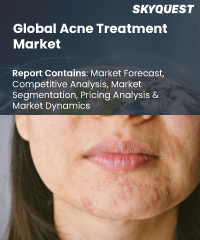
Report ID: SQMIG35B2040

Report ID:
SQMIG35B2040 |
Region:
Global |
Published Date: July, 2001
Pages:
165
|
Tables:
117 |
Figures:
77
Acne Treatment Market Driver
Acne's Global Increase Will Drive Market Growth
Acne Treatment Market Restraint
Adoption is being hampered by side effects associated with currently available drugs
Our industry expert will work with you to provide you with customized data in a short amount of time.
REQUEST FREE CUSTOMIZATIONAcne Treatment Market size was valued at USD 9.164 billion in 2019 and is poised to grow from USD 9.6 billion in 2023 to USD 13.2 billion by 2031, growing at a CAGR of 4.63% in the forecast period (2024-2031).
Want to customize this report? This report can be personalized according to your needs. Our analysts and industry experts will work directly with you to understand your requirements and provide you with customized data in a short amount of time. We offer $1000 worth of FREE customization at the time of purchase.

Report ID: SQMIG35B2040